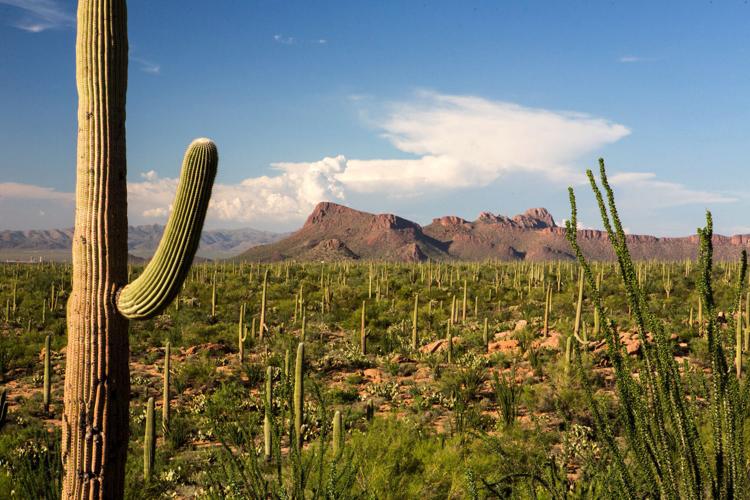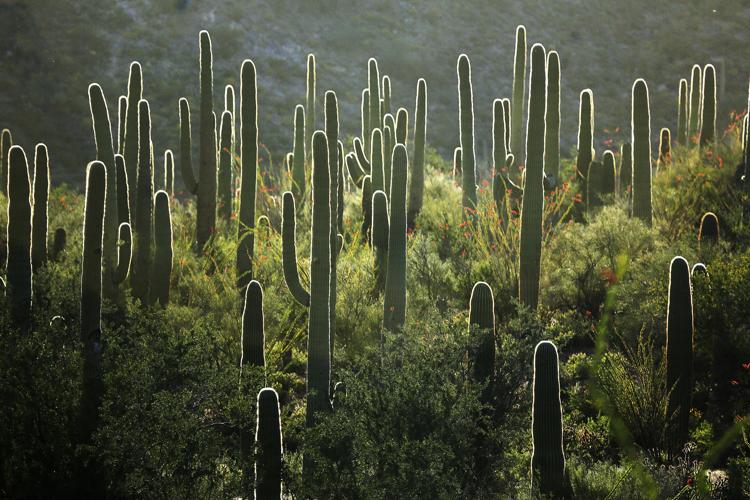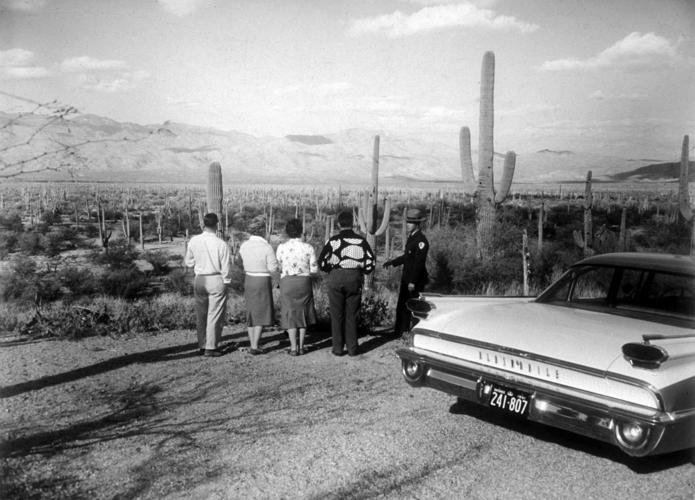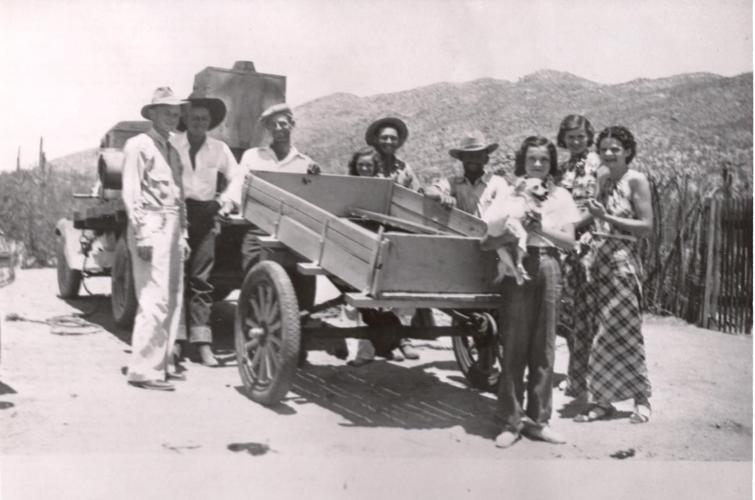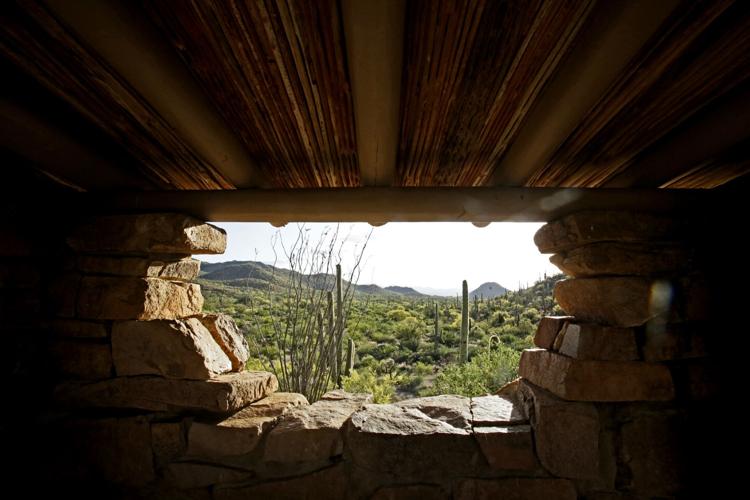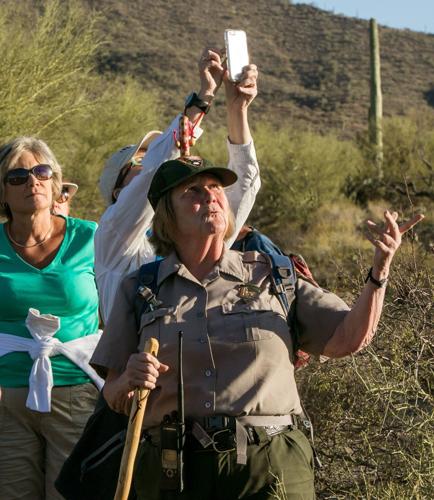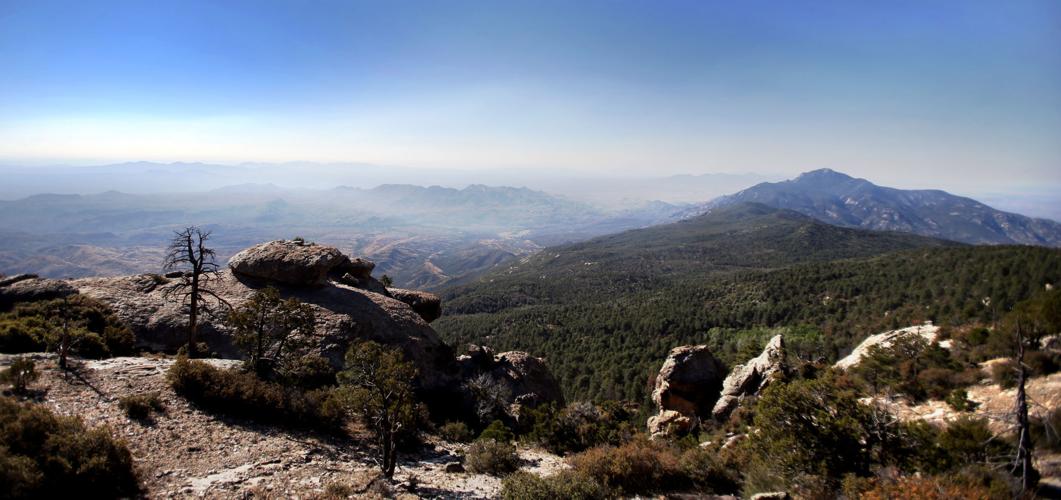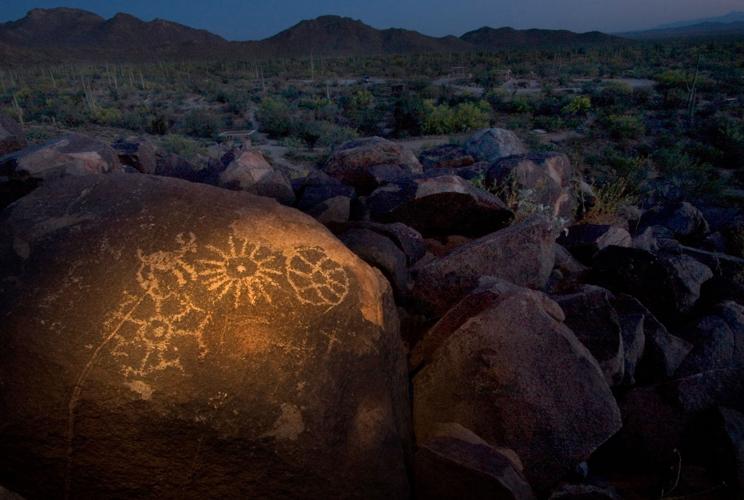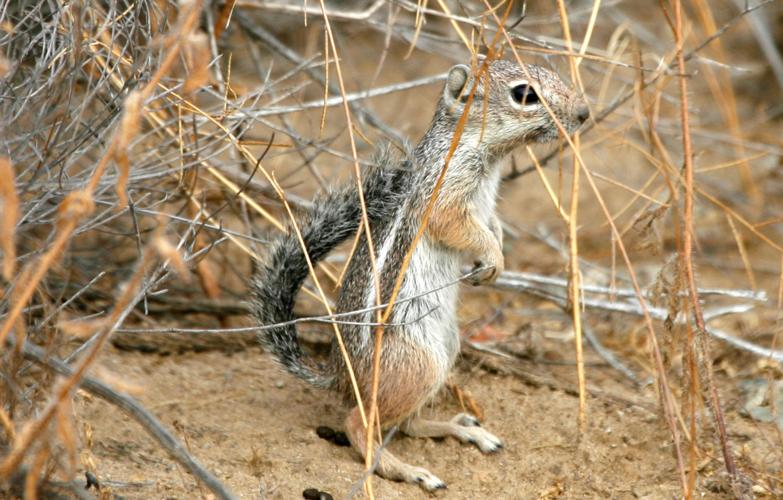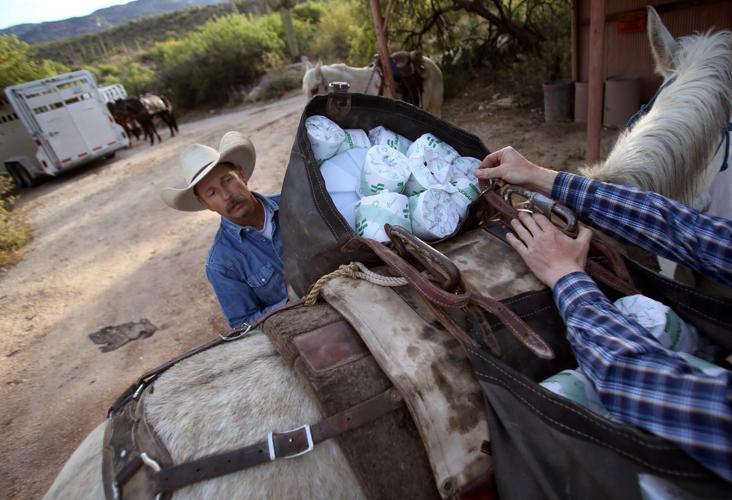This week marks the centennial of the National Park Service, which was established on Aug. 25, 1916. In celebration of the milestone, the Star will publish several stories about National Park Service sites in Arizona. We begin today with Saguaro National Park, a scenic gem considered by many to be Tucson’s “backyard national park.”
Saguaro National Park is named for the towering, shapely cactus that stands as an enduring symbol of the American Southwest.

A park ranger with visitors on the loop drive in Saguaro National Monument in 1961.
But the park — made up of grand expanses of deserts, canyons and mountains on the eastern and western flanks of Tucson — preserves not only saguaros but a diverse community of plants and animals in terrain ranging from prickly deserts to pine-topped peaks.
Remarkably, given its location so near a major city, most of Saguaro Park is designated as “wilderness” by the federal government. And all that wild land is a kind of paradise for those who love the outdoors.
“Saguaro is one of 412 National Park Service sites across the United States, but it is distinct in that it is the largest ‘wilderness’ park immediately contiguous to a major metropolitan city,” said Darla Sidles, superintendent of the park until recently when she accepted a position at Rocky Mountain National Park. “It’s more than 91,000 acres and 78 percent is designated wilderness.”

Saguaro cacti are backlit by western sun at Saguaro National Park’s west unit. The National Park Service is celebrating its centennial this year.
“BACKYARD NATIONAL PARK”
Sidles said countless Tucsonans will experience their “backyard national park” during this year’s centennial of the National Park Service.
“Bookending both the east and west sides of Tucson, Saguaro is open to all for exploring, hiking, bicycling, picnicking, birding, photography, visiting cultural sites, attending environmental education programs, or simply sitting quietly and enjoying the slower pace surrounded by our beautiful Sonoran Desert landscape,” Sidles said.

The view east over Reef Rock from near the top of the Rincon Mountains in Saguaro National Park. This photo was taken in June.
She emphasized that Saguaro Park is “unique in so many ways” and shared some examples:
“To begin with, it was established in 1933 with an express purpose of protecting the iconic saguaro cactus, which is the tallest cactus in the United States, and is recognized worldwide as the iconic symbol of the American Southwest,” Sidles said.
It is the largest roadless “sky island “in the American Southwest — rising like an island above the surrounding desert. The park ranges in elevation from 2,500 feet to 8,600 feet, and is the ecological equivalent of walking from Mexico to Canada.
Within a few miles, the species within the park range from desert dwellers such as Gila monsters, desert tortoises, and saguaro cacti, to high elevation species such as black bears, spotted owls, and Douglas fir trees.
It has a long human history and a legacy of scientific interest and research.
It has a rich concentration of cultural resources that tell the history of continuous and diverse human occupation in the Southwest from prehistoric to modern times.

Ranger Donna Gill points out cactus flowers and birds during a hike on Sendero Esperanza Trail at Saguaro National Park.
HIKERS’ HAVEN
Saguaro Park is a magnet for hikers — ranging from those seeking a casual stroll on flat terrain to “trail animals” tackling 18-mile round-trip treks in some of the park’s more rugged terrain.
“We see a lot of wildlife in the early morning hours,” said Bob Cardell, president of the Southern Arizona Hiking Club. “I personally really enjoy seeing the dark silhouettes of the numerous saguaros in the park as the sun comes up.
“We see many beautiful sunrises and perfect photo opportunities,” Cardell said. “And over the years we have located about 10 different beautiful crested saguaros in the park, which we visit and photograph frequently. All the trails in this park are very well marked — and bless the Park Service for maintaining them in such great shape.”

Sid Kahla, left, and Thor Peterson get a pannier balanced on Goose while packing seven mules for a resupply of the Manning Camp ranger station in the east division of Saguaro National Park.


